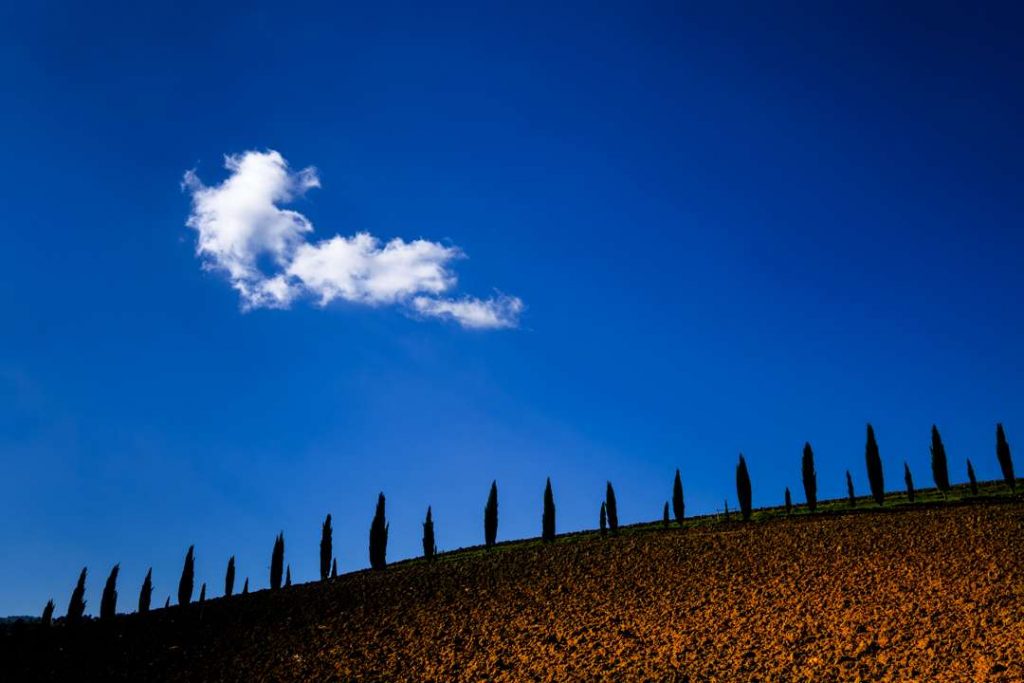
Creating strong images is often more about what you choose to exclude from your compositions than what you include. Extraneous objects, distracting bright spots, or other visual detritus rarely add anything to what you are trying to say visually. All elements of your images possess “visual weight”: that tendency for each element to grab and hold your attention. Different elements possess different amounts of visual weight, forming a sort hierarchy of things that grab your attention. Successful images minimize the visual weight of elements in your images that are not part of what you are trying to say photographically allowing those important elements to grab and hold your viewer’s attention. if an element in your image adds nothing to your visual message, it automatically takes away from it. Simplifying your compositions is one of the easiest ways to minimize the visual weight of distractions and strengthen the impact of your images.
A classic example of extraneous objects diluting your compositions is the “tree growing from someone’s head in a group portrait” scenario. Solving this, and other similar problems in composition is simply about being aware of your background and finding a point-of-view that eliminates or at least minimizes the impact of these distracting elements. Solving these problems boils down to recognizing those elements that are important to your visual message and eliminating those that are not.
Begin by identifying what you are trying to say: what you are trying to show the viewer, or what you are trying to make them feel about your subject. This is harder than it sounds, since often your “subject” is not a “thing”; it can also be a mood, a concept, a colour or shape, or the relationships among these.
I came across the image above along the backroads of Tuscany, while scouting for one of my workshops. For me, this wasn’t a landscape so much as it was about the line of the hill punctuated by a row of cypress trees, and the complementary colours of the blue sky and the red clay typical of the Crete Senesi. It was just those elements that were important to me, nothing else; not the winding road just out of frame or the green grass along the ridge of the hill. In a bygone era when we shot film, I would have chosen a high saturation film like Fuji Velvia or Kodak E100SW and underexposed this scene to drop the lower shadow values to near black and saturate the remaining colours. In the digital world it’s better practice to expose for good shadow detail (while being careful not to blow the highlights!) and then drop the shadow detail out in post…. a very simple adjustment in Lightroom or Adobe Camera Raw. The result is just what I saw in my mind’s eye when I peered through the viewfinder.
The image below is another example of the same concept. This image is not for me a picture of the clock tower in this Italian town, rather it’s about line, shape and colour. Dropping the shadow values here allowed me to remove the distracting detail in the sides of the buildings below the clock tower, leaving strong lines to support the tower against the blue Tuscan sky.

When you can’t eliminate distracting elements by changing your point of view or creative use of exposure, you can at times reduce their impact through selective focus techniques (using longer focal length lenses and/or wider apertures to limit depth-of-field) or perhaps even shooting through something to obscure the distracting elements. In the image below, shooting through some foliage in my backyard and using a macro lens wide-open at f/2.8 eliminated the distractions of tree branches and garden tools in the background.

To quote Jay Maisel, “You are responsible for every square millimeter of what is in your viewfinder”. Understanding what is important to your visual message and eliminating everything that doesn’t add to this will result in simpler more impactful images.
(The next session of my class. “After the Click, refining your vision in Lightroom or Adobe Camera Raw”, begins March 1st. Join me to discover how to identify the visual weight relationships in your images and how to refine these in post to clarify your visual message)
-BPSOP Instructor – Mark English
Mark Teaches:
After the Click: Refining Your Vision in Lightroom & Camera Raw
The Art of Printing & Selling Your Art
















